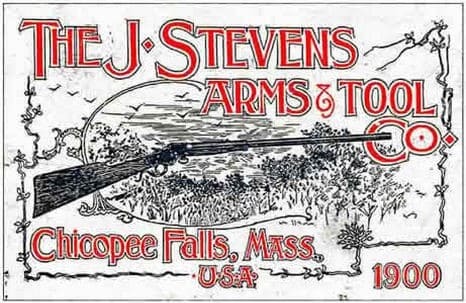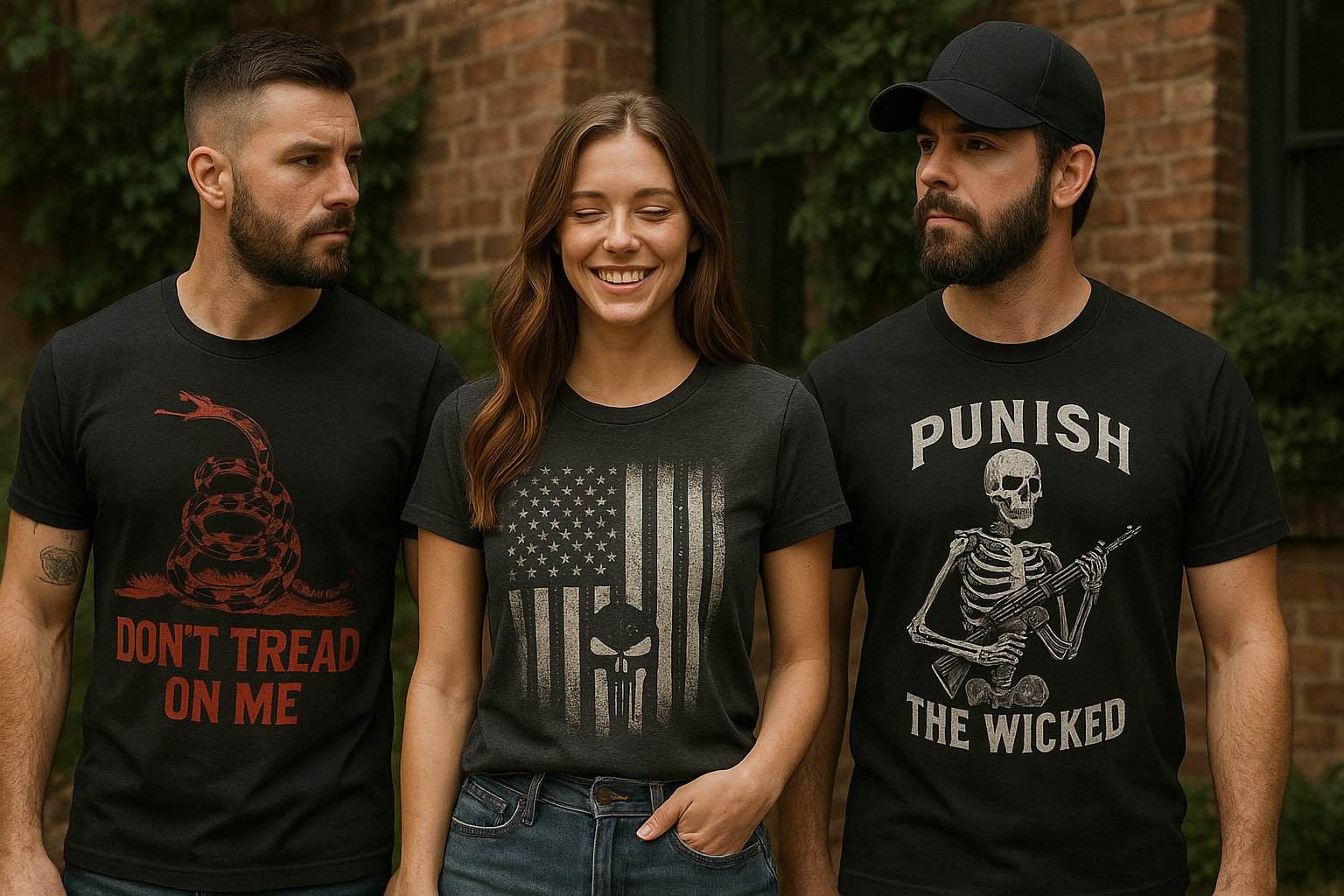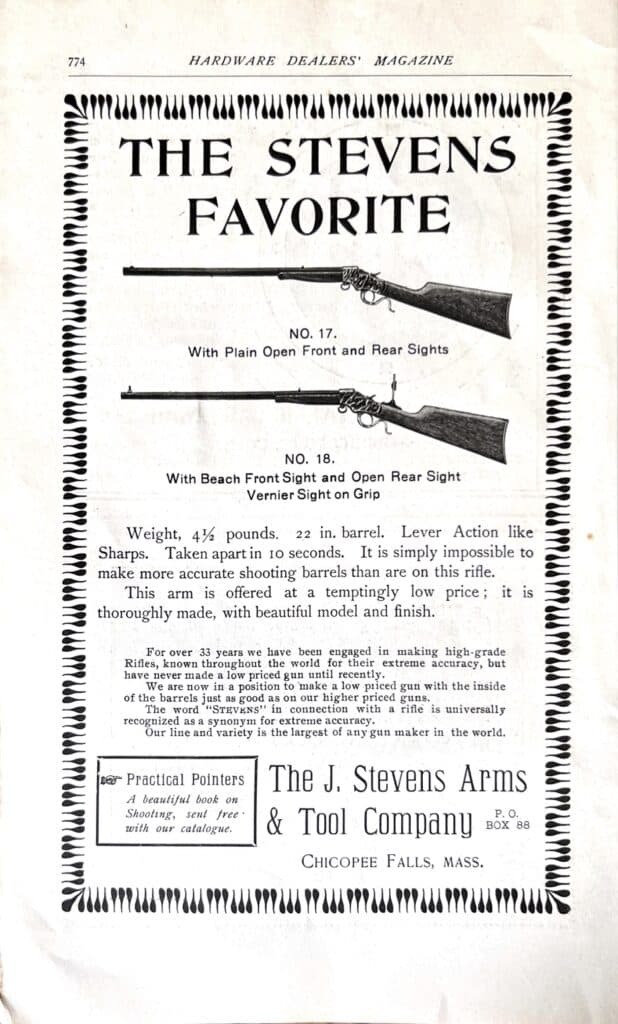
Introduction to J. Stevens & Co.
J. Stevens & Co., founded in 1864, stands as one of the most influential firearm manufacturers in American history. Known for their precision engineering, innovative designs, and contributions to the evolution of affordable and accurate firearms, the company played a pivotal role in shaping the firearms industry. From introducing the iconic Stevens Favorite single-shot rifle to pioneering rimfire cartridge development, J. Stevens & Co. left an indelible mark on both competitive shooting and civilian firearm ownership.
Despite multiple ownership changes over the years, the Stevens name continues to resonate with collectors, historians, and shooting enthusiasts. This article explores the company's origins, innovations, acquisitions, and lasting legacy in the world of firearms.
The Founding of J. Stevens & Co.
J. Stevens & Co. was established in Chicopee Falls, Massachusetts, in 1864 by renowned gunmaker Joshua Stevens, with financial backing from James Taylor and W.B. Fay. Though the company’s inception coincided with the American Civil War (1861-1865), Stevens was primarily focused on sporting arms rather than military contracts.
Joshua Stevens: A Master Craftsman
Before founding his company, Joshua Stevens was an accomplished machinist and firearm designer. His experience included work with some of the biggest names in American firearms manufacturing, including:
- C.B. Allen – A pioneer in early percussion firearms.
- Eli Whitney – Known for producing firearms with interchangeable parts.
- Samuel Colt – One of the most influential gunmakers in American history.
Stevens’ extensive background in precision machining and firearm design laid the foundation for what would become one of the most respected firearms manufacturers in the country.
Early Innovations and Firearm Production
The First Stevens Firearm: The Pocket Pistol (1864)
J. Stevens & Co. initially focused on manufacturing firearm components such as barrels for other manufacturers. However, in 1864, the company launched its first complete firearm—the Stevens Pocket Pistol. This tip-up action pistol, a hallmark of the company’s early designs, was both simple and reliable, making it an instant success among civilian shooters.
The Stevens Tip-Up Rifle (1866)
Building on the success of the Pocket Pistol, J. Stevens & Co. introduced the Stevens Tip-Up Rifle in 1866. Featuring the same break-open action, this single-shot rifle became widely popular due to its ease of use, affordability, and precision.
Primary Features of the Tip-Up Rifle:
- Available in various calibers (.22, .32, and .44 rimfire)
- Simple, robust break-action design
- Favored for target shooting and small-game hunting
This rifle cemented Stevens’ reputation for producing well-made, budget-friendly firearms that were accessible to the average shooter.
Pioneering Cartridge Innovations
J. Stevens & Co. was instrumental in the development of some of the most enduring small-bore rimfire cartridges.
The .22 Long Rifle (1887)
One of the company’s most significant contributions was in popularizing the .22 Long Rifle (LR) cartridge in 1887. Though not invented solely by Stevens, the company played a crucial role in refining and marketing it as the premier small-caliber round for target shooting, small-game hunting, and training new shooters. Today, the .22 LR remains the most widely used rimfire cartridge in the world.
The .25 Stevens and .25 Stevens Long Rimfire (1898 & 1900)
In an attempt to improve upon small-game hunting calibers, Stevens introduced the .25 Stevens (1898) and later the .25 Stevens Long (1900). These cartridges were designed for their single-shot rifles, such as the Stevens Ideal Rifle. However, with the rise of centerfire cartridges in the early 20th century, the .25 Stevens series gradually faded into obsolescence.
Expansion and Key Firearm Models
The Stevens Favorite (1889)
One of Stevens’ most iconic firearms, the Stevens Favorite, was introduced in 1889 as an affordable and lightweight single-shot rifle chambered in .22 LR, .25, and .32 rimfire.
Key Features:
- Compact falling-block action
- Available in multiple calibers
- Extremely popular among youth shooters and small-game hunters
Due to its reliability and affordability, the Stevens Favorite became known as the quintessential American boy’s first rifle.
The Stevens Crack Shot (1895)
Similar in concept to the Favorite, the Crack Shot was another single-shot rifle, introduced in 1895. It featured an improved lever action and was marketed toward budget-conscious buyers looking for a dependable small-game rifle.
The Stevens Visible Loader (1907)
This pump-action .22 rifle was one of the first widely available repeating rifles from Stevens. The Visible Loader was unique in its design, though it had reliability issues due to the complex internal feeding mechanism.
John Browning’s Influence: The Stevens Model 520 (1909)
One of Stevens’ most notable collaborations was with legendary gun designer John Browning, who designed the Stevens Model 520, a pump-action shotgun. This firearm, produced from 1909 to the early 1950s, was notable for its hammerless design and robust construction.
During World War II, the Model 520 was adapted into a trench shotgun for the U.S. military, where it saw use in the Pacific Theater.
Company Acquisitions and Transitions
New England Westinghouse and World War I (1916-1920)
In 1916, J. Stevens Arms & Tool Co. was acquired by New England Westinghouse, a subsidiary of Westinghouse Electric. The company’s manufacturing facilities were repurposed to produce Mosin-Nagant Model 1891 rifles for the Russian military under contract. However, following the Russian Revolution in 1917, payment for these rifles was never completed, leading to financial losses.
Acquisition by Savage Arms (1920-Present)
In 1920, J. Stevens Arms was purchased by Savage Arms, marking a new era for the brand. Under Savage’s ownership:
- The Stevens name continued as a budget-friendly firearm line
- Models such as the Stevens Model 311 double-barrel shotgun became popular
- Production of innovative rimfire and centerfire rifles expanded
Today, the Stevens brand still exists under Savage Arms, primarily associated with affordable hunting shotguns and rifles.
The Enduring Legacy of J. Stevens & Co.
Though it has undergone multiple transitions, the impact of J. Stevens & Co. on the firearms industry remains undeniable. Its influence can be seen in:
- The widespread adoption of the .22 Long Rifle cartridge
- The development of affordable, accurate single-shot rifles
- Contributions to pump-action and semi-auto firearm technology
J. Stevens & Co. revolutionized American firearm manufacturing by making well-built firearms available to the masses, ensuring that their legacy endures in the hands of collectors, competitive shooters, and outdoor enthusiasts to this day.
Sources and Further Reading
Savage Arms Official Website: www.savagearms.com
Flayderman, Norm. Flayderman’s Guide to Antique American Firearms. Gun Digest Books.
Houze, Herbert G. J. Stevens Arms & Tool Co.: A History of the Guns and the Company That Made Them.
NRA Museum: www.nramuseum.org
Read more about J. Stevens Arms & Tool Co. here:
Discussions on the products and legacy of the J. Stevens Co. can be found on the Rimfire Forums here.
If you know of any forums or sites that should be referenced on this listing, please let us know here.









